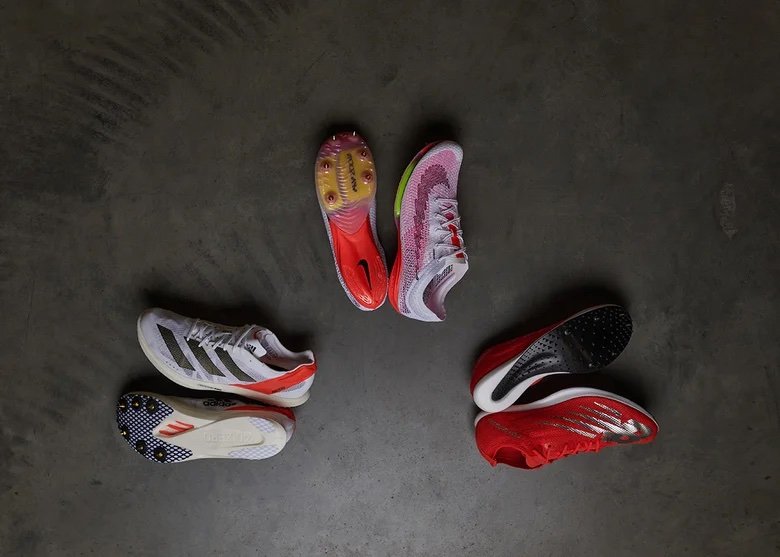The impact of super spikes on running economy
by Doug Stewart
The Olympics are fast approaching and the European Athletics Championships start today. Also, those of you that follow athletics and track races may have seen Josh Kerr setting a new British Record for the mile at the Bowerman Mile. Whilst we now have super shoes for the road marathon and projects like Breaking 2, what advances have been made in track spikes (running shoes)?
Super Spikes © Running Warehouse
A paper published in May explored the impact of super spikes versus traditional running spikes and how they compared to super shoes for road runners. Super spikes is the term given to track events which combine the innovations we’ve noticed in road running shoes, such as a “super foam” with excellent energy return and carbon fibre plates in the midsole.
The main area of focus of the Joubert et al. paper was these shoes’ impact on running economy (essentially looking at your running efficiency by measuring how much oxygen or energy your body needs to run at a particular speed). If you have an improved running economy, you will run faster for the same amount or less oxygen consumption. We have seen this contributing to faster marathon times, for example, thanks to super shoes.
In the study, the researchers compared 2 sets of super spikes with a control (regular) pair, and then also 3 super shoes for the road (and again a control pair of road running shoes). The results confirmed that super spikes improved running economy compared to the control spikes. One pair improved running economy by 2.1% and the other pair by 1.8%. When comparing the super spikes with the super shoes there was no significant differences, suggesting that the super road shoes, despite being heavier than the spikes, were as economical.
An improvement of around 2% in running economy is less than improvements advertised by some super shoes, such as the 4% advertised by certain Nike models. However, it is in line with a number of other road super shoes. Additionally, this is very individual, so certain makes and models will favour one runner more than another. Finally, remember that a 2% improvement in running economy is not a the same as a 2% improvement in running speed. But, on the track, where the margin of victory is very fine, these gains are significant.
So, at the Olympics, we can expect that super spikes will be in use, and will likely result in some very fast times being run, as we have already seen this season at various track events.
Reference:
Joubert, D. P., Oehlert, G. M., Jones, E. J., & Burns, G. T. (2024). Comparative Effects of Advanced Footwear Technology in Track Spikes and Road-Racing Shoes on Running Economy. International Journal of Sports Physiology and Performance, 1(aop), 1-7.

